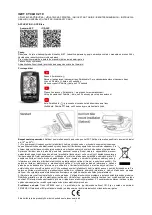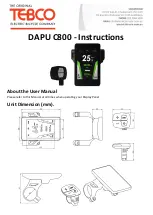
30
IQ plus 710 Installation Manual
BANDVAL
number
GROSSSP, NETSP, and –RELSP setpoint types with TRIP=INBAND or OUTBAND:
Specifies a weight equal to half the band width. The band established around the
setpoint value is VALUE ±BANDVAL.
HYSTER
number
GROSSSP, NETSP, and –RELSP setpoint types: Specifies a band around the
setpoint value that must be exceeded before the setpoint, once off, can trip on again.
ALARM
OFF
ON
GROSSSP, NETSP, and –RELSP setpoint types: Specify ON to display the word
ALARM
on the primary display while the setpoint is active (batch setpoints) or while
the setpoint is not tripped (continuous setpoints).
PREACT
OFF
ON
LEARN
GROSSSP, NETSP, and –RELSP setpoint types: Allows the digital output associated
with a setpoint to shut off before the setpoint is satisfied to allow for material in
suspension.
The ON value adjusts the setpoint value up or down (depending on the TRIP
parameter value) from the setpoint value.
The LEARN value can be used to automatically adjust the preact value after each
batch. LEARN compares the actual weight at standstill to the target setpoint value,
then adjusts the preact by half of the difference after each batch.
PREVAL
number
GROSSSP, NETSP, and –RELSP setpoint types: Specifies the preact value for
setpoints with PREACT set to ON or LEARN. Depending on the TRIP value specified
for the setpoint, the setpoint trip value is adjusted up or down by the preact value.
BATCH
OFF
ON
GROSSSP, NETSP, and –RELSP setpoint types: Specifies whether the setpoint is
used as a batch (ON) or continuous (OFF) setpoint.
ACCESS
OFF
ON
HIDE
All setpoint types: Specifies whether the SETPOINT key can be used to change the
setpoint value in normal mode, including macro simulations of pressing the
SETPOINT key.
ON: Value can be displayed and changed
OFF: Value can be displayed but not changed
HIDE: Value cannot be displayed or changed
NAME
NONE
, 1–16
GROSSSP, NETSP, –RELSP, DELAY, and WAITSS setpoint types: Specify the
number of an assigned setpoint name.
DIGOUT
NONE
, 1–8
All setpoint types: Specifies a digital output associated with the setpoint. For
continuous setpoints, the digital output is turned on when the condition is met; for
batch setpoints, the digital output is on
until
the setpoint condition is met.
RELNUM
1–8
–RELSP setpoints: Specifies the number of the relative setpoint. The target weight
for this setpoint is the setpoint value of the relative setpoint minus the setpoint value
of this setpoint.
START
1–8
TIMER and CONCUR setpoint types: Specifies the starting setpoint number.
Do not
specify the number of the TIMER or CONCUR setpoint itself. The TIMER or
CONCUR setpoint begins monitoring when the starting setpoint begins.
END
1–8
TIMER and CONCUR setpoint types: Specifies the ending setpoint number.
Do not
specify the number of the TIMER or CONCUR setpoint itself. The TIMER or
CONCUR setpoint stops monitoring when the ending setpoint begins.
SETPNTS Menu
Parameter
Choices
Description
Table 3-7. Setpoint Menu Parameters
















































